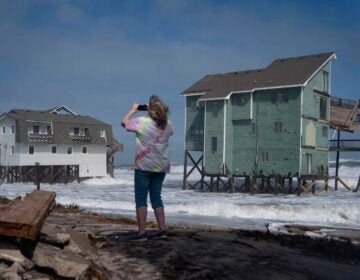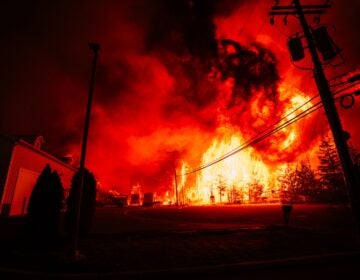Winter snow storm blankets Philadelphia region: See snowfall totals
The accumulating snow came to an end early Saturday morning but the fresh snow is making for a good sledding or skiing holiday weekend.
This story originally appeared on 6abc.
The Philadelphia region got more snow overnight Friday, creating a winter wonderland. Some areas seeing more snow accumulation than others.
The storm overachieved in some areas — especially the Lehigh Valley — with more locations up there picking up more snow in an hour than southern areas did during the entire event, according to Meteorologist Chris Sowers.
The accumulating snow came to an end early Saturday morning but the fresh snow is making for a good sledding or skiing holiday weekend.
Many roads appear to be in good shape but beware of secondary roads where conditions are slushy and slick.
Many trees and powerlines are also being weighed down with snow, which could cause issues.
Winter storm warnings and winter storm advisories are in effect across the Delaware Valley until 10 a.m. Saturday.
Code Blue in Philadelphia
Due to extremely cold conditions, the city is implementing special measures to keep people who are homeless safe. If you see someone who needs shelter, call (215) 232-1984.
The city activates a Code Blue when there’s precipitation and the temperature is 32 degrees Fahrenheit or lower, and when it feels near or below 20 degrees due to wind chill.
A #CodeBlue will be in effect as of 3 p.m. today, Friday, Feb.16 until 9 a.m. on Tues., Feb. 20. Call our #Homeless Outreach Hotline at (215) 232-1984 if you are, or see someone living outside in freezing temps. Learn more: https://t.co/0XD7uNFNP1 pic.twitter.com/SgyHY3FhtB
— Homeless Services (@PHLCityHomeless) February 16, 2024
Latest forecast
The snow began to develop in the Lehigh Valley and Berks County after 11 p.m. Friday before it moved into Philadelphia around midnight, and then at the shore shortly thereafter.
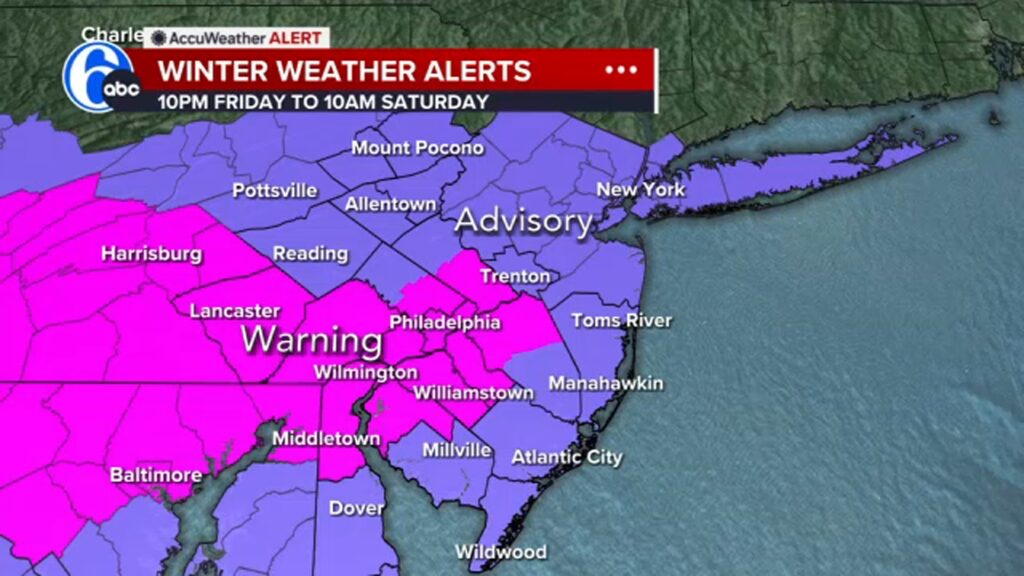
The snowfall began to tapper off as the sun rose Saturday morning, but not until the winter snow storm blankets the region, dropping more than two feet of snow in some parts of the region.
A general 2-4″ of snow was expected across most of the area. Some areas, including Philadelphia, saw between 4 to 6″ of snow. Near Cape May and southern Delaware will see less, perhaps a coating to 2″.
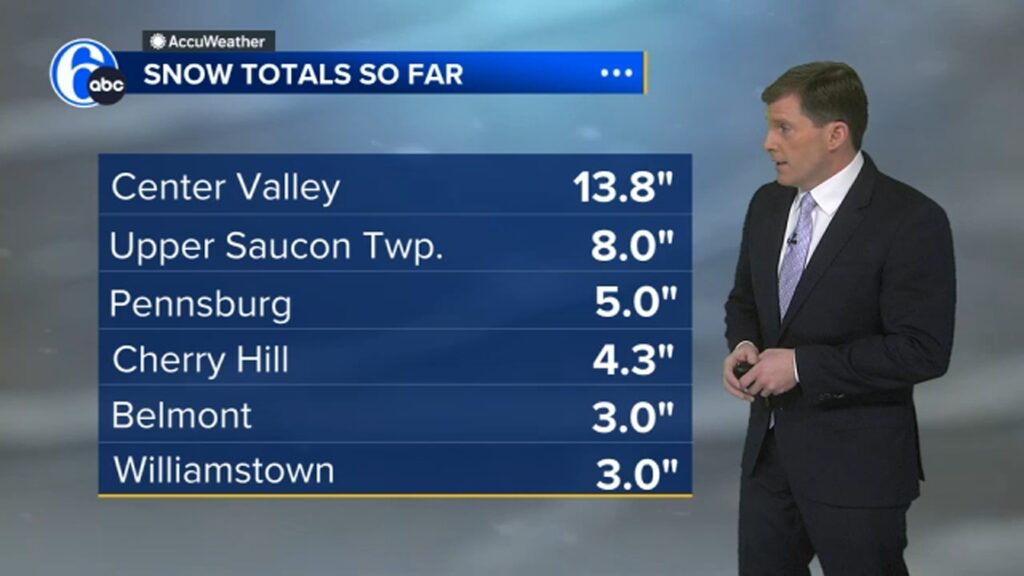
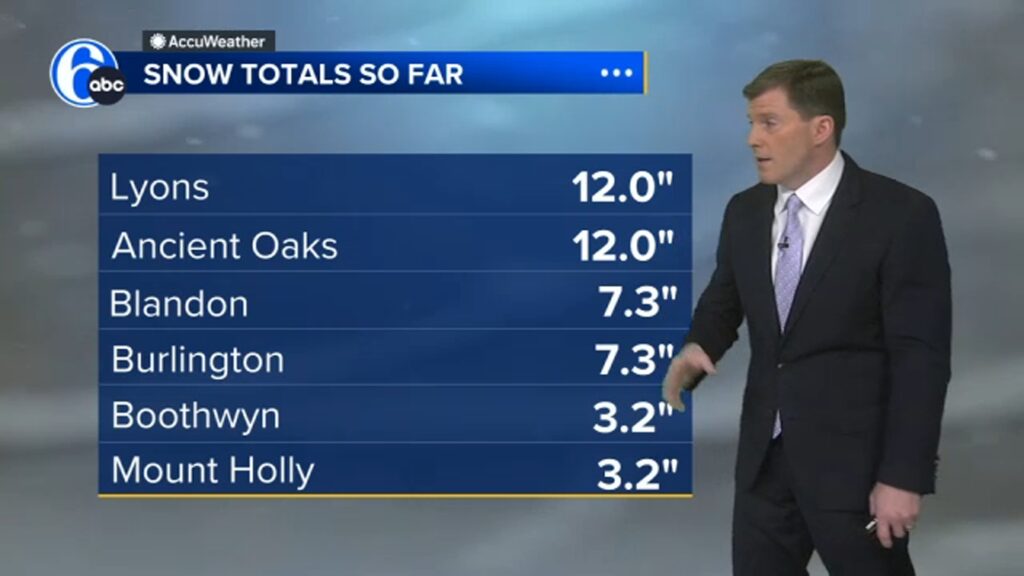
As of early Saturday morning, Hellertown reported 11.8″ of snow from overnight.
Lyon, Ancient Oaks and Center Valley have each recorded at least 12″ of snowfall.
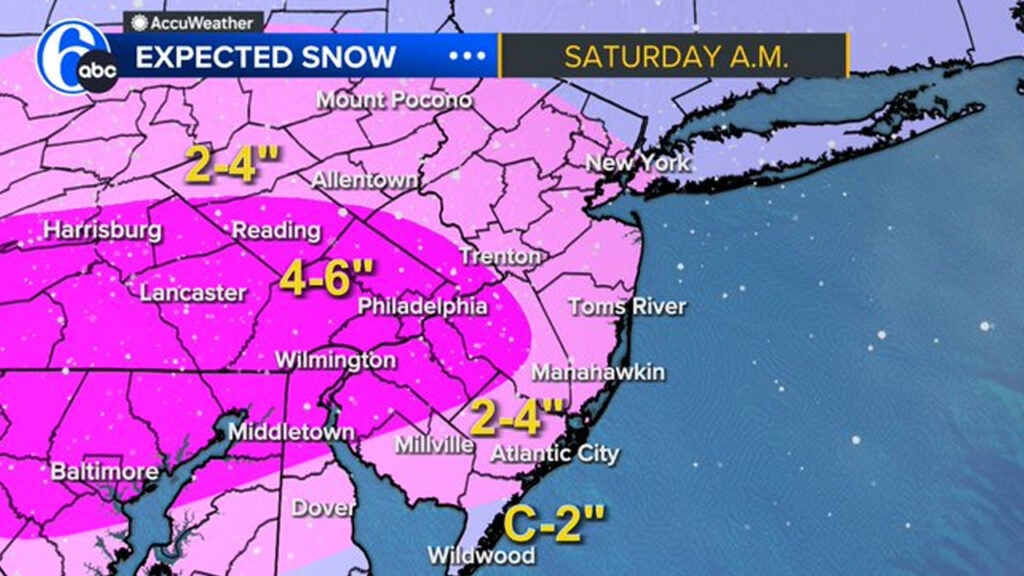
The temperatures are on the cooler side Saturday in the upper 30s but wind chills will be stuck in the 20s. Watch for any melting and refreezing overnight into Sunday morning as temperatures drop below freezing.
The rest of the holiday weekend features sunny skies with temperatures gradually warming into the low 40s.
Flight delays, cancellations at PHL
As of 9 a.m. Saturday, at least three flights have been cancelled and 31 have been delayed at Philadelphia International Airport due to the weather conditions, according to FlightAware.
If you are heading out or flying into PHL today, check with your airline before heading to the airport.
Stay ready
Keep the 6abc mobile app handy for real-time updates on traffic and your AccuWeather forecast.
If you do have to travel during the storm, AAA advises to be cautious and offers the following safety tips:
- Check road conditions – Before you leave, assess the conditions of roads along your route.
- Remove ALL snow and ice – It’s the law in Pennsylvania – motorists must remove all snow and ice from their vehicles before returning to the roads; dislodged snow/ice can become projectiles.
- Slow down/increase following distance – Adjust your speed to the road conditions and leave yourself ample room to stop. Allow at least three times more space than usual between you and the car in front of you. Accelerate, turn and brake gradually. Don’t brake and turn at the same time. Asking the car to do two things at once makes it more likely your tires will lose traction.
- Never use cruise control on slippery roads – A driver should always be in full control of their vehicle during poor road conditions and cruise control can misinterpret slipping and sliding as the vehicle slowing down and attempt to accelerate to maintain speed.
- Avoid unnecessary lane changes – This increases the chances of hitting a patch of ice between lanes that could cause loss of vehicle traction. Drive in plowed lanes. If that’s not available, drive in the tire tracks of vehicles in front of you.
- Know your brakes – Whether you have antilock brakes or not, keep the heel of your foot on the floor and use the ball of your foot to apply firm, steady pressure on the brake pedal.
- Control the skid – Slamming on the brakes can make the skid even worse. If you are approaching a patch of ice, brake during your approach. Applying pressure to your brakes while on the ice will only throw you into a skid. If you do start to skid, ease off of the accelerator or brake and steer in the direction you want the front of the car to go.
- Don’t follow behind other vehicles as closely as you would when driving in clear, dry conditions – Your vehicle cannot slow down as quickly on slick roads. Increase following distances to 8 seconds or more and always keep open space to at least one side of your vehicle, in case you need make an emergency lane change maneuver.
- Don’t be rough with your steering, acceleration and braking – If you are not gentle with steering, acceleration and braking, your vehicle’s balance can be negatively affected, increasing the chance of experiencing a skid. Always steer, accelerate and brake smoothly.
- Don’t stop if you can avoid it – There’s a big difference in the amount of inertia it takes to start moving from a full stop versus how much it takes to get moving while still rolling. If you can slow down enough to keep rolling until a traffic light changes, do it. Be aware of traffic ahead and slow down even more if you start to see brake lights or fish tailing cars.
- Do not power up hills – Applying extra gas on snow-covered roads may only result in spinning your wheels. Try to get a little inertia going before you reach the hill and let that inertia carry you to the top. As you reach the crest of the hill, reduce your speed and proceed downhill as slowly as possible. Don’t stop on a hill as you may not be able to get the vehicle moving again.
WHYY is your source for fact-based, in-depth journalism and information. As a nonprofit organization, we rely on financial support from readers like you. Please give today.


